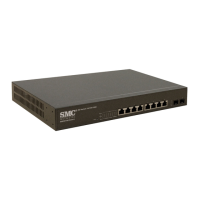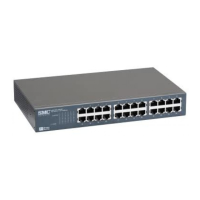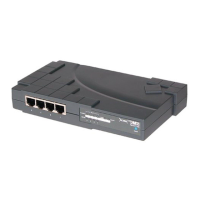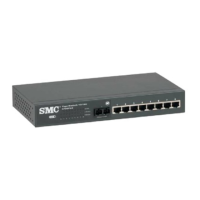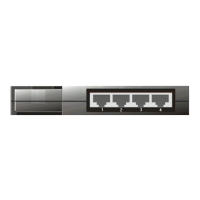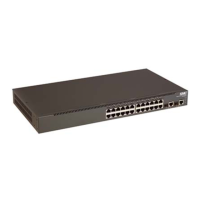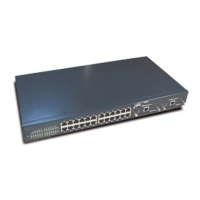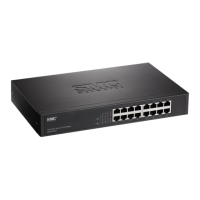C
HAPTER
3
| Using the Web Interface
Navigating the Web Browser Interface
– 33 –
MAIN MENU Using the onboard web agent, you can define system parameters, manage
and control the switch, and all its ports, or monitor network conditions. The
following table briefly describes the selections available from this program.
Table 4: Main Menu
Menu Description Page
Configuration 41
System
Information Configures system contact, name and location 41
IP Configures IPv4 and SNTP settings 42
IPv6 Configures IPv6 and SNTP settings 44
NTP Enables NTP, and configures a list of NTP servers 46
Log Configures the logging of messages to a remote logging
process, specifies the remote log server, and limits the type
of system log messages sent
47
Power Reduction 48
LED Reduces LED intensity during specified hours 48
EEE Configures Energy Efficient Ethernet for specified queues,
and specifies urgent queues which are to transmit data after
maximum latency expires regardless queue length
50
Thermal Protection Configures temperature priority levels, and assigns those
priorities for port shut-down if exceeded
51
Ports Configures port connection settings 52
Security 55
Switch 55
Users Configures user names, passwords, and access levels 55
Privilege Levels Configures privilege level for specific functions 57
Auth Method Configures authentication method for management access
via local database, RADIUS or TACACS+
59
SSH Configures the Secure Shell server 61
HTTPS Configures secure HTTP settings 62
Access
Management
Sets IP addresses of clients allowed management access via
HTTP/HTTPS, and SNMP, and Telnet/SSH
63
SNMP Simple Network Management Protocol 65
System Configures read-only and read/write community strings for
SNMP v1/v2c, engine ID for SNMP v3, and trap parameters
66
Communities Configures community strings 69
Users Configures SNMP v3 users on this switch 70
Groups Configures SNMP v3 groups 72
Views Configures SNMP v3 views 73
Access Assigns security model, security level, and read/write views
to SNMP groups
74
Network
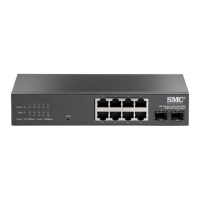
